#tableau tutorial for beginners
Explore tagged Tumblr posts
Text
Master Data Preparation in Tableau: Beginner’s Guide for 2024
youtube
0 notes
Text
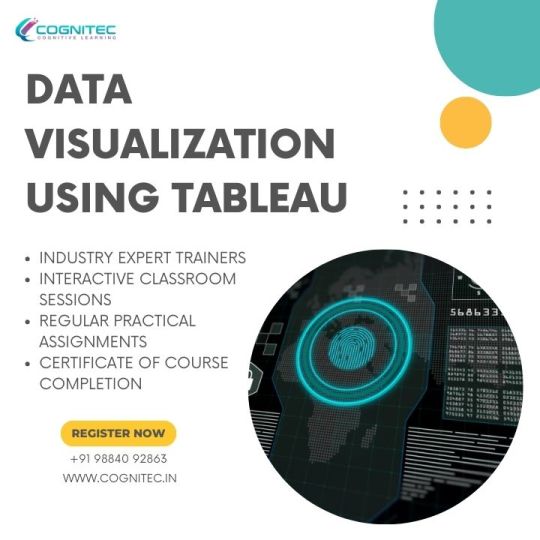
Data Visualization Using Tableau,Using Tableau To Visualize Data,Visualization Using Tableau,Tableau For Beginners Data Visualisation,How To Visualize Data Using Tableau,Data Visualization Using Tableau Tutorial,Tableau Visualisation,Data Visualisation With Tableau
#Data Visualization Using Tableau#Using Tableau To Visualize Data#Visualization Using Tableau#Tableau For Beginners Data Visualisation#How To Visualize Data Using Tableau#Data Visualization Using Tableau Tutorial#Tableau Visualisation#Data Visualisation With Tableau
0 notes
Text
Cracking the Code: A Beginner's Roadmap to Mastering Data Science
Embarking on the journey into data science as a complete novice is an exciting venture. While the world of data science may seem daunting at first, breaking down the learning process into manageable steps can make the endeavor both enjoyable and rewarding. Choosing the best Data Science Institute can further accelerate your journey into this thriving industry.
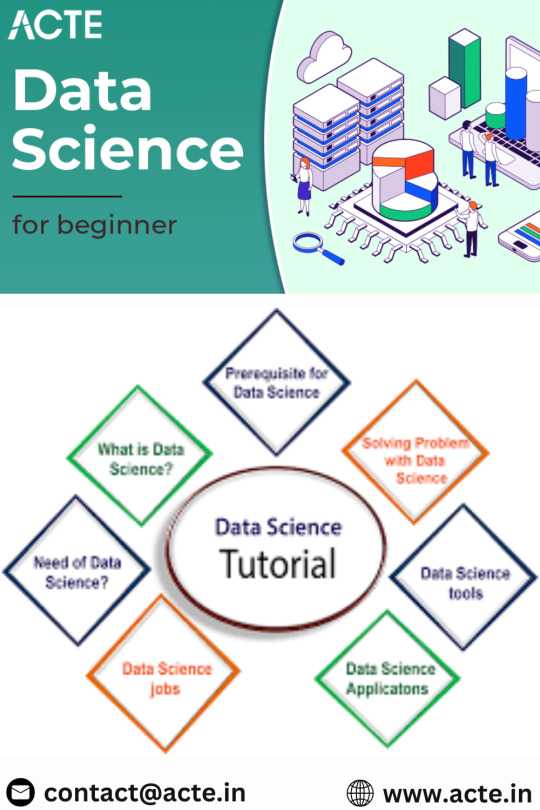
In this comprehensive guide, we'll outline a roadmap for beginners to get started with data science, from understanding the basics to building a portfolio of projects.
1. Understanding the Basics: Laying the Foundation
The journey begins with a solid understanding of the fundamentals of data science. Start by familiarizing yourself with key concepts such as data types, variables, and basic statistics. Platforms like Khan Academy, Coursera, and edX offer introductory courses in statistics and data science, providing a solid foundation for your learning journey.
2. Learn Programming Languages: The Language of Data Science
Programming is a crucial skill in data science, and Python is one of the most widely used languages in the field. Platforms like Codecademy, DataCamp, and freeCodeCamp offer interactive lessons and projects to help beginners get hands-on experience with Python. Additionally, learning R, another popular language in data science, can broaden your skill set.
3. Explore Data Visualization: Bringing Data to Life
Data visualization is a powerful tool for understanding and communicating data. Explore tools like Tableau for creating interactive visualizations or dive into Python libraries like Matplotlib and Seaborn. Understanding how to present data visually enhances your ability to derive insights and convey information effectively.
4. Master Data Manipulation: Unlocking Data's Potential
Data manipulation is a fundamental aspect of data science. Learn how to manipulate and analyze data using libraries like Pandas in Python. The official Pandas website provides tutorials and documentation to guide you through the basics of data manipulation, a skill that is essential for any data scientist.
5. Delve into Machine Learning Basics: The Heart of Data Science
Machine learning is a core component of data science. Start exploring the fundamentals of machine learning on platforms like Kaggle, which offers beginner-friendly datasets and competitions. Participating in Kaggle competitions allows you to apply your knowledge, learn from others, and gain practical experience in machine learning.
6. Take Online Courses: Structured Learning Paths
Enroll in online courses that provide structured learning paths in data science. Platforms like Coursera (e.g., "Data Science and Machine Learning Bootcamp with R" or "Applied Data Science with Python") and edX (e.g., "Harvard's Data Science Professional Certificate") offer comprehensive courses taught by experts in the field.
7. Read Books and Blogs: Supplementing Your Knowledge
Books and blogs can provide additional insights and practical tips. "Python for Data Analysis" by Wes McKinney is a highly recommended book, and blogs like Towards Data Science on Medium offer a wealth of articles covering various data science topics. These resources can deepen your understanding and offer different perspectives on the subject.
8. Join Online Communities: Learning Through Connection
Engage with the data science community by joining online platforms like Stack Overflow, Reddit (e.g., r/datascience), and LinkedIn. Participate in discussions, ask questions, and learn from the experiences of others. Being part of a community provides valuable support and insights.
9. Work on Real Projects: Applying Your Skills
Apply your skills by working on real-world projects. Identify a problem or area of interest, find a dataset, and start working on analysis and predictions. Whether it's predicting housing prices, analyzing social media sentiment, or exploring healthcare data, hands-on projects are crucial for developing practical skills.
10. Attend Webinars and Conferences: Staying Updated
Stay updated on the latest trends and advancements in data science by attending webinars and conferences. Platforms like Data Science Central and conferences like the Data Science Conference provide opportunities to learn from experts, discover new technologies, and connect with the wider data science community.
11. Build a Portfolio: Showcasing Your Journey
Create a portfolio showcasing your projects and skills. This can be a GitHub repository or a personal website where you document and present your work. A portfolio is a powerful tool for demonstrating your capabilities to potential employers and collaborators.
12. Practice Regularly: The Path to Mastery
Consistent practice is key to mastering data science. Dedicate regular time to coding, explore new datasets, and challenge yourself with increasingly complex projects. As you progress, you'll find that your skills evolve, and you become more confident in tackling advanced data science challenges.
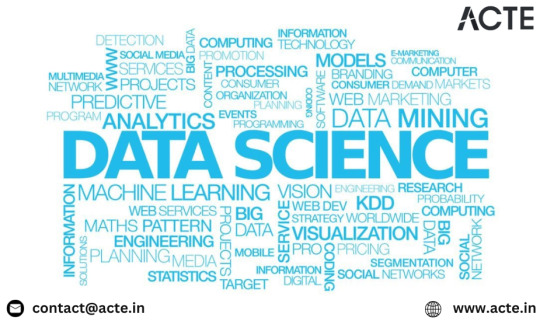
Embarking on the path of data science as a beginner may seem like a formidable task, but with the right resources and a structured approach, it becomes an exciting and achievable endeavor. From understanding the basics to building a portfolio of real-world projects, each step contributes to your growth as a data scientist. Embrace the learning process, stay curious, and celebrate the milestones along the way. The world of data science is vast and dynamic, and your journey is just beginning. Choosing the best Data Science courses in Chennai is a crucial step in acquiring the necessary expertise for a successful career in the evolving landscape of data science.
3 notes
·
View notes
Text
How to Switch From a Non-Tech Background to Data Science: A Step-by-Step Guide
Data science is one of the most exciting and rapidly evolving fields today. With businesses relying heavily on data to drive decisions, professionals who can extract insights from complex datasets are in high demand. If you come from a non-tech background, the thought of transitioning into this realm might feel daunting, but it’s achievable!
Imagine being able to tell compelling stories with numbers, help organizations make informed choices, or even predict future trends. The world of data science opens doors not just for tech enthusiasts but for anyone willing to learn and adapt. This guide will walk you through how to switch gears and embark on an exhilarating career in data science—a journey that starts with understanding foundational skills and takes you through job opportunities tailored for beginners like yourself. Let’s dive in!

Understand What Data Science Is
Before diving in, it's essential to understand what data science entails and how it fits into today’s business and technology landscape. At its core, data science is about using data to derive insights and solve problems. It combines skills from statistics, computer science, and domain expertise to analyze data, build models, and support decision-making.
This doesn’t mean you need to be a math wizard or a coding prodigy. What matters most is your ability to learn and apply concepts to real-world problems.
Identify Your Transferable Skills
You might be surprised to learn that many skills from non-tech backgrounds—like communication, problem-solving, and domain knowledge—are highly valued in data science.
For example:
Marketing professionals bring customer insight and analytical thinking.
Finance experts understand data-driven decision-making.
Educators often excel in structured thinking and clear communication.
Project managers know how to coordinate, report, and evaluate performance.
Recognizing these transferable skills can boost your confidence and help you position yourself effectively when job hunting.
Learn the Core Concepts and Tools
To succeed in data science, you need to build a foundation in key areas like statistics, programming, and data visualization. Here’s what to focus on:
Statistics and Probability Basics
Understanding the fundamentals of statistics is crucial for interpreting data and making sound decisions. Topics like distributions, correlation, regression, and hypothesis testing are essential.
Python or R Programming
Learning a programming language like Python or R will empower you to manipulate data, run analyses, and build predictive models. Python is generally recommended for beginners due to its simplicity and widespread use.
Data Manipulation and Visualization Tools
Tools like Pandas (Python library), SQL (for querying databases), and Tableau or Power BI (for data visualization) are industry standards. These tools help you clean, explore, and present data in a meaningful way.
Take Advantage of Online Courses and Resources
Numerous free and paid resources are available specifically for beginners from non-tech fields. Here are a few reputable platforms to consider:
Coursera – Great for structured courses from top universities.
edX – Offers both free and certificate programs.
DataCamp – Interactive coding tutorials tailored to data science.
Kaggle Learn – Free micro-courses and datasets for hands-on practice.
Start small. Begin with introductory courses and gradually move to more complex topics.
5. Build Real Projects to Apply What You Learn
Hands-on projects are the fastest way to cement your learning and showcase your abilities to future employers. Try these ideas:
Analyze a dataset from Kaggle or a public data repository.
Build a dashboard showing business metrics.
Predict outcomes (e.g., sales, customer churn) using regression models.
Choose projects related to your background to highlight your domain knowledge and show how it translates into data insights.
Network and Connect With the Data Science Community
Engaging with the data science community through meetups, forums, and social media can accelerate your growth and open doors. Join:
LinkedIn groups related to data science
Reddit communities like r/datascience
Local data science meetups or online events
Hackathons and datathons to practice collaboratively
Connecting with others can lead to mentorship, feedback, and job opportunities.
8. Prepare for the Job Market
With your skills and portfolio in place, it's time to start tailoring your resume, practicing interviews, and applying for roles. Focus on:
Entry-level positions like data analyst, junior data scientist, or business intelligence analyst
Keywords in job descriptions (use them in your resume)
Storytelling during interviews—explain your career change, projects, and learning journey confidently
Practice with mock interviews and behavioral questions to build your comfort level.
9. Consider Further Education or Certifications
While not always required, a structured program or certification can provide credibility and fill in knowledge gaps. Look into:
Google Data Analytics Certificate (Coursera)
IBM Data Science Professional Certificate (Coursera)
Harvard’s Data Science MicroMasters (edX)
Certifications can help bridge the gap, especially if you lack a technical degree.
10. Stay Consistent and Keep Learning
The field of data science evolves rapidly, so continuous learning and curiosity are key to long-term success. Subscribe to newsletters, follow industry blogs, and experiment with new tools and techniques.
Treat learning like a habit, not a phase.
Final Thoughts
Breaking into data science from a non-tech background is challenging, but with perseverance, strategic learning, and confidence, it's a realistic and rewarding career move. Leverage your unique strengths, stay consistent, and remember—everyone starts somewhere.
Your past doesn’t define your potential in data science. You do.
#CareerSwitch#DataScienceJourney#NonTechToTech#CareerChange#DataScienceForBeginners#Upskill#LearnDataScience#Reskill#BreakingIntoTech#TransitionToDataScience#DataScienceGuide#TechCareerChange#DataScienceLearningPath#DataScienceTips#SwitchToTech
0 notes
Text
Transform Your Skills in 2025: Master Data Visualization with Tableau & Python (2 Courses in 1!)

When it comes to storytelling with data in 2025, two names continue to dominate the landscape: Tableau and Python. If you’re looking to build powerful dashboards, tell data-driven stories, and break into one of the most in-demand fields today, this is your chance.
But instead of bouncing between platforms and tutorials, what if you could master both tools in a single, streamlined journey?
That’s exactly what the 2025 Data Visualization in Tableau & Python (2 Courses in 1!) offers—an all-in-one course designed to take you from data novice to confident visual storyteller.
Let’s dive into why this course is creating buzz, how it’s structured, and why learning Tableau and Python together is a smart move in today’s data-first world.
Why Data Visualization Is a Must-Have Skill in 2025
We’re drowning in data—from social media metrics and customer feedback to financial reports and operational stats. But raw data means nothing unless you can make sense of it.
That’s where data visualization steps in. It’s not just about charts and graphs—it’s about revealing patterns, trends, and outliers that inform smarter decisions.
Whether you're working in marketing, finance, logistics, healthcare, or even education, communicating data clearly is no longer optional. It’s expected.
And if you can master both Tableau—a drag-and-drop analytics platform—and Python—a powerhouse for automation and advanced analysis—you’re giving yourself a massive career edge.
Meet the 2-in-1 Power Course: Tableau + Python
The 2025 Data Visualization in Tableau & Python (2 Courses in 1!) is exactly what it sounds like: a double-feature course that delivers hands-on training in two of the most important tools in data science today.
Instead of paying for two separate learning paths (which could cost you more time and money), you’ll:
Learn Tableau from scratch and create interactive dashboards
Dive into Python programming for data visualization
Understand how to tell compelling data stories using both tools
Build real-world projects that you can show off to employers or clients
All in one single course.
Who Should Take This Course?
This course is ideal for:
Beginners who want a solid foundation in both Tableau and Python
Data enthusiasts who want to transition into analytics roles
Marketing and business professionals who need to understand KPIs visually
Freelancers and consultants looking to offer data services
Students and job seekers trying to build a strong data portfolio
No prior coding or Tableau experience? No problem. Everything is taught step-by-step with real-world examples.
What You'll Learn: Inside the Course
Let’s break down what you’ll actually get inside this 2-in-1 course:
✅ Tableau Module Highlights:
Tableau installation and dashboard interface
Connecting to various data sources (Excel, CSV, SQL)
Creating bar charts, pie charts, line charts, maps, and more
Advanced dashboard design techniques
Parameters, filters, calculations, and forecasting
Publishing and sharing interactive dashboards
By the end of this section, you’ll be comfortable using Tableau to tell stories that executives understand and act on.
✅ Python Visualization Module Highlights:
Python basics: data types, loops, functions
Data analysis with Pandas and NumPy
Visualization libraries like Matplotlib and Seaborn
Building statistical plots, heatmaps, scatterplots, and histograms
Customizing charts with color, labels, legends, and annotations
Automating visual reports
Even if you’ve never coded before, you’ll walk away confident enough to build beautiful, programmatically-generated visualizations with Python.
The Real-World Value: Why This Course Stands Out
We all know there’s no shortage of online courses today. But what makes this one worth your time?
🌟 1. Two for the Price of One
Most courses focus on either Tableau or Python. This one merges the best of both worlds, giving you more for your time and money.
🌟 2. Hands-On Learning
You won’t just be watching slides or lectures—you’ll be working with real data sets, solving real problems, and building real projects.
🌟 3. Resume-Boosting Portfolio
From the Tableau dashboards to the Python charts, everything you build can be used to show potential employers what you’re capable of.
🌟 4. Taught by Experts
This course is created by instructors who understand both tools deeply and can explain things clearly—no confusing jargon, no filler.
🌟 5. Constantly Updated
As Tableau and Python evolve, so does this course. That means you’re always learning the latest and greatest features, not outdated content.
Why Learn Both Tableau and Python?
Some people ask, “Isn’t one enough?”
Here’s the thing: they serve different purposes, but together, they’re unstoppable.
Tableau is for quick, intuitive dashboarding.
Drag-and-drop interface
Ideal for business users
Great for presentations and client reporting
Python is for flexibility and scale.
You can clean, manipulate, and transform data
Build custom visuals not possible in Tableau
Automate workflows and scale up for big data
By learning both, you cover all your bases. You’re not limited to just visuals—you become a full-spectrum data storyteller.
Data Careers in 2025: What This Course Prepares You For
The demand for data professionals continues to skyrocket. Here’s how this course sets you up for success in various career paths: RoleHow This Course HelpsData AnalystBuild dashboards, analyze trends, present insightsBusiness Intelligence AnalystCombine data from multiple sources, visualize it for execsData Scientist (Junior)Analyze data with Python, visualize with TableauMarketing AnalystUse Tableau for campaign reporting, Python for A/B analysisFreelancer/ConsultantOffer complete data storytelling services to clients
This course can be a launchpad—whether you want to get hired, switch careers, or start your own analytics agency.
Real Projects = Real Confidence
What sets this course apart is the project-based learning approach. You'll create:
Sales dashboards
Market trend analysis charts
Customer segmentation visuals
Time-series forecasts
Custom visual stories using Python
Each project is more than just a tutorial—it mimics real-world scenarios you’ll face on the job.
Flexible, Affordable, and Beginner-Friendly
Best part? You can learn at your own pace. No deadlines, no pressure.
You don’t need to buy expensive software. Tableau Public is free, and Python tools like Jupyter, Pandas, and Matplotlib are open-source.
Plus, with lifetime access, you can revisit any lesson whenever you want—even years down the road.
And all of this is available at a price that’s far less than a bootcamp or university course.
Still Not Sure? Here's What Past Learners Say
“I had zero experience with Tableau or Python. After this course, I built my own dashboard and presented it to my team. They were blown away!” – Rajiv, Product Analyst
“Perfect combo of theory and practice. Python sections were especially helpful for automating reports I used to make manually.” – Sarah, Marketing Manager
“Loved how everything was explained so simply. Highly recommend to anyone trying to upskill in data.” – Alex, Freelancer
Final Thoughts: Your Data Career Starts Now
You don’t need to be a programmer or a math wizard to master data visualization. You just need the right guidance, a solid roadmap, and the willingness to practice.
With the 2025 Data Visualization in Tableau & Python (2 Courses in 1!), you’re getting all of that—and more.
This is your chance to stand out in a crowded job market, speak the language of data confidently, and unlock doors in tech, business, healthcare, finance, and beyond.
Don’t let the data wave pass you by—ride it with the skills that matter in 2025 and beyond.
0 notes
Text

How to Start a Career in Data Analytics Without a Tech Background.
Let’s be honest—"data analytics" sounds like something only coders and spreadsheet wizards can do, right?
But here’s the truth: you don’t need to be a tech genius to start a career in data analytics. In fact, some of the best data analysts come from fields like marketing, finance, education, or even hospitality. What they all have in common? A curiosity to understand data and a willingness to learn.
This essay is for you if you've ever wondered, "I like solving problems, but I don't know where to start."
🧠 What Is Data Analytics, Really?
Think of data analytics as detective work with numbers. Businesses generate tons of data—sales numbers, website clicks, customer feedback—and they need someone to find the patterns, answer questions, and help them make better decisions.
A data analyst’s job is to: Collect and clean data Analyze trends Create reports and dashboards Help teams make smarter choices No complex coding needed to start—just clear thinking, basic tools, and some practice.
🌱 Step-by-Step Guide to Get Started Without a Tech Background
Start with the Mindset, Not the Tools First, believe this: you belong in data. Don’t let jargon intimidate you. You don’t need a computer science degree. What you do need is:
Curiosity Problem-solving skill A love for learning That’s your foundation.
Learn the Basics (One Step at a Time) Start small. You don’t need to jump into Python or SQL on Day 1.
Begin with:
Excel/Google Sheets – Learn formulas, pivot tables, basic charts.
Data literacy – Understand terms like KPI, metric, dashboard, etc.
Free courses – Try YouTube tutorials or beginner courses on platforms like Coursera, Udemy, or LinkedIn Learning.
📌 Tip: Try analyzing your own budget or workout data to practice.
Master Key Tools Slowly Once you’re comfortable, move on to the key tools data analysts use:
Tool Why Learn It? Excel Industry standard for data cleaning SQL Helps you pull data from databases Power BI / Tableau Used for creating visual reports and dashboards Python (optional) Helpful, but not required initially
Don’t try to learn everything at once—pick one and stick with it until you're comfortable.
Work on Real-Life Projects You don’t need a job to get experience. Use free datasets from sites like:
Kaggle.com Data.gov OurWorldinData.org
Start a project like: Analyzing COVID data in your region Creating a dashboard of your expenses Studying trends in Netflix shows or YouTube videos
Then write about your process on LinkedIn or Medium. It shows initiative and builds your portfolio.
Get Certified (Optional but Helpful) Certifications can give you a confidence boost and look great on a resume. Look into:
Google Data Analytics Certificate Microsoft Power BI Certification Coursera / Udemy beginner courses
They’re not required, but they help you stand out.
Apply for Entry-Level Roles (Even if You Don’t Tick Every Box) You don’t need to meet 100% of the job description to apply.
Look for roles like:
Junior Data Analyst Business Analyst Reporting Analyst Operations Analyst
Highlight your soft skills: communication, problem-solving, and attention to detail. Show how you’re learning the tools. That matters more than a perfect résumé.
💬 Real Talk: What Makes a Good Data Analyst (That Has Nothing to Do With Tech)? You ask “why” a lot
You enjoy making sense of chaos You’re patient with details You like telling stories with numbers Sound like you? Then you're already halfway there.
🎯 Final Words Starting a data analytics career without a tech background isn't just possible—it’s happening every day. With the right mindset, consistent effort, and a little curiosity, you can absolutely break in.
And remember: everyone was a beginner once.
If you’re ready to take the first step, our Data Analytics program at Ntech Global Solutions is built for career changers just like you. We teach you real-world skills, not just theory—so you can go from “I don’t know where to start” to “I got the job!”
#data analytics#data analyst course in delhi#data analyst training#code#python#programming#sql#excel#power bi#tableau
1 note
·
View note
Text
youtube
New to data visualization? 📊 This beginner-friendly Tableau YouTube tutorial guides you through connecting data sources, creating interactive charts, and uncovering insights. Ideal for students and aspiring analysts crafting compelling visual stories!
0 notes
Text
How to Start a Career in Data Science with No Technical Background
If you’ve ever thought, “Data science sounds fascinating, but I don’t have a tech background,” you’re not alone — and you’re definitely not out of luck.
Here’s the truth: you don’t need to be a coder, a statistician, or a data engineer to start a career in data science. What you need is curiosity, consistency, and the right approach.
This blog will walk you through exactly how someone from a non-technical field — like marketing, finance, operations, education, or even arts — can break into the world of data science.
Step 1: Understand What Data Science Actually Is
Start by learning the basics of data science — what it means, how it's used, and the kind of problems it solves.
Think of data science as a combination of three core elements:
Math and Statistics – to make sense of data
Programming – to work with and process that data
Business Understanding – to know which problems are worth solving
The best part? You can learn all of this at your own pace, even if you’re starting from zero.
Step 2: Start with Tools You’re Familiar With
If you’ve used Excel or Google Sheets, you’ve already worked with data.
From there, you can gradually move to tools like:
SQL – to pull data from databases
Python – to manipulate, analyze, and visualize data
Power BI or Tableau – to create dashboards and visual stories
There are beginner-friendly platforms and tutorials available to help you learn these tools step-by-step.
Step 3: Focus on Real-World Applications
Don’t try to memorize formulas or force yourself to master every algorithm. Instead, focus on how data science is used in the real world:
In marketing to measure campaign performance
In HR to predict employee attrition
In finance to detect fraud
In supply chain to optimize delivery routes
Relating concepts to your current domain makes learning not only easier but more enjoyable.
Step 4: Work on Projects, Not Just Theory
Even if you’re still learning, try to work on mini-projects using publicly available datasets from Kaggle or government portals.
For example:
Analyze sales data and build a forecast model
Explore customer churn patterns for a telecom company
Create a dashboard showing COVID-19 trends
These projects will become part of your portfolio, making you stand out when applying for jobs.
Step 5: Keep Learning, Keep Growing
The field of data science evolves fast. Stay updated by:
Following data science communities on LinkedIn
Watching free courses and tutorials
Reading blogs and case studies
Connecting with mentors or peers online
Ready to Get Started?
If you're serious about breaking into data science, there's no better time than now — and no better way than starting with a free beginner-friendly course.
🎥 Check out this free YouTube course on Data Science that explains core concepts, tools, and techniques — all in simple, easy-to-follow language:
👉 Click here to watch the full course
You don’t need a tech degree — just a desire to learn and take the first step. Your data science journey starts today!
0 notes
Text
Key Principles of Effective Graphic Design: Typography, Color Theory, and Layout
Image editing in graphic design:Common Questions Answered
1.Which app is mostly used for graphic design?
Adobe Photoshop is the most widely used app for graphic design, known for its powerful editing capabilities and versatility in creating images, graphics, and digital art. Other popular graphic design tools include Adobe Illustrator for vector graphics, Canva for user-friendly templates, and CorelDRAW for illustration. Each app caters to different design needs, but Photoshop remains the industry standard for many professionals.
2. What are graphic tools?
Graphic tools are software applications or platforms used to create, edit, and manipulate visual content. They include design software like Adobe Photoshop and Illustrator, online platforms like Canva, and data visualization tools such as Tableau or Microsoft Power BI. These tools enable users to craft graphics, infographics, illustrations, and other visual representations for various purposes, including marketing, presentations, and social media. Graphic tools often feature user-friendly interfaces and a range of templates and features that cater to both beginners and experienced designers, enhancing creativity and communication through visual means.
3. What techniques do graphic designers use?
Graphic designers employ various techniques, including typography for effective text presentation, color theory to evoke emotions, and composition principles to create visually appealing layouts. They utilize software like Adobe Creative Suite for digital designs, while hand-drawing skills enhance creativity. Designers also apply visual hierarchy to guide viewer focus, and utilize grids for balanced design structures. Incorporating vector graphics ensures scalability, while understanding branding helps maintain consistency. Additionally, techniques like layering, texture application, and contrast usage further enhance their designs, allowing for unique and engaging visual communication.
4. Which type is best in graphic design?
The best type in graphic design often depends on the project's context and audience. However, sans-serif fonts like Helvetica and Arial are commonly favored for their modern, clean look and readability, especially in digital formats. Serif fonts like Times New Roman or Georgia are ideal for print materials that convey tradition and reliability. Ultimately, the choice should align with the brand's identity, the message being communicated, and the overall aesthetic of the design. Experimenting with various typefaces can help find the best fit for specific design needs.
5. How to start graphic design for beginners?
To start graphic design as a beginner, begin by understanding the basic principles of design, such as color theory, typography, and composition. Familiarize yourself with design software like Adobe Photoshop, Illustrator, or free alternatives like Canva and GIMP. Explore online tutorials and courses to build your skills. Practice by creating simple projects, like logos or social media graphics. Analyze designs you admire and seek feedback on your work. Join design communities to connect with others and gain inspiration. Consistent practice and experimentation will help you grow as a designer over time.
Visit: VS Website See: VS Portfolio

Visit: VS Website See: VS Portfolio
0 notes
Text
Data Science for Beginners: Essential Tutorials to Build Your Skills
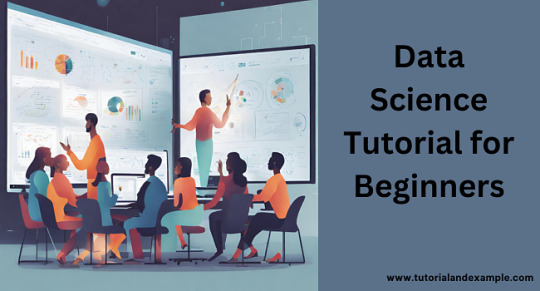
Data Science is one of the most exciting fields in today’s digital world. If you're new to this, don't worry! This Data Science tutorial for beginners will help you understand the basics and guide you on how to start your journey.
Data Science combines statistics, programming, and domain knowledge to analyze data and solve real-world problems. It involves several steps: collecting data, cleaning it, analyzing patterns, and presenting insights. These insights help companies make better decisions, predict trends, and improve processes.
Why Learn Data Science?
Data is everywhere! From social media to healthcare, businesses rely on data to grow. Learning data science can open doors to high-paying jobs and exciting projects. It’s a skill in demand, making it a great field to explore.
How to Get Started?
Learn the Basics: Start with Python or R programming. These are beginner-friendly and widely used in data science.
Understand Statistics: Knowledge of mean, median, standard deviation, and probability is crucial.
Explore Data Visualization: Tools like Tableau or libraries like Matplotlib in Python help present data clearly.
Work on Projects: Practice is key! Try simple projects like analyzing weather patterns or predicting sales trends.
As a beginner, focus on building a strong foundation. There are plenty of free resources and tutorials to help you grow step-by-step.
For a more detailed guide, check out Data Science Tutorial. Happy learning!
0 notes
Text
Learn Power BI From Scratch: A Detailed Tutorial Guide For Beginners
𝐊𝐞𝐲 𝐓𝐨𝐩𝐢𝐜𝐬 𝐂𝐨𝐯𝐞𝐫𝐞𝐝:
👉Planning to learn Power BI from Scratch? 👉 What is Power BI? 👉Power BI Components: 👉Power BI Architecture: 👉Power BI vs Tableau: 👉How to get Power BI certification?
𝑅𝑒𝑎𝑑 𝑜𝑢𝑟 𝐿𝑎𝑡𝑒𝑠𝑡 𝐵𝑙𝑜𝑔:
𝐅𝐨𝐫 𝐅𝐫𝐞𝐞 𝐂𝐨𝐧𝐬𝐮𝐥𝐭𝐚𝐭𝐢𝐨𝐧: 𝐂𝐚𝐥𝐥: +91-9711526942 𝐖𝐡𝐚𝐭𝐬𝐚𝐩𝐩: +91 82879 10135
0 notes
Text
Your Step-by-Step Guide to Launching a Career as a Data Analyst
If you've ever considered becoming a data analyst, you're not alone. The demand for data-driven decision-making has made this career path both rewarding and exciting. But how do you get started? What skills are crucial? This blog will guide you through the process, drawing insights from the Data Analytics Course in Chennai.

1. Understand the Role of a Data Analyst
A data analyst is responsible for gathering, processing, and interpreting data to help businesses make informed decisions. They work with numbers, charts, and reports to uncover patterns and insights that can shape better strategies.
2. Master the Basics of Data Analysis
Begin by learning the core concepts of data analysis. This involves understanding how to work with different types of data (such as numerical and categorical) and learning how to draw meaningful conclusions from it. You can find beginner-friendly courses on platforms like Coursera, edX, or YouTube.
3. Get Proficient with Spreadsheets
Spreadsheets, like Microsoft Excel or Google Sheets, are essential tools for any data analyst. They allow you to efficiently organize, sort, and analyze data. Start by learning basic functions like SUM, AVERAGE, and VLOOKUP, then advance to more complex features like pivot tables and data visualization.
4. Learn a Programming Language
Familiarity with a programming language like Python or R can significantly streamline your data analysis work. These languages allow you to automate repetitive tasks, clean data, and perform complex analyses. Websites like Codecademy and DataCamp offer interactive courses that are perfect for beginners.
If you want to learn more about Data Analytics, consider enrolling in an Data Analytics Online Course. They often offer certifications, mentorship, and job placement opportunities to support your learning journey.
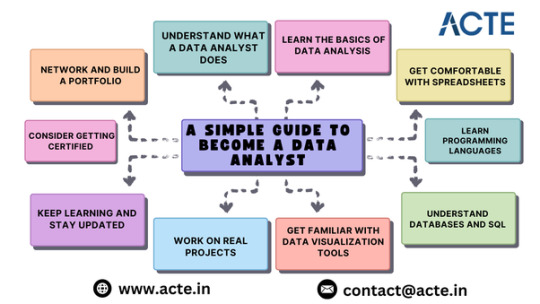
5. Understand Databases and SQL
SQL (Structured Query Language) is a crucial skill for any data analyst. It enables you to retrieve and manipulate data stored in databases, allowing you to access the exact information needed for analysis. Start with free tutorials on websites like W3Schools or Khan Academy.
6. Explore Data Visualization Tools
Data visualization is about presenting your findings in a way that’s easy to understand. Tools like Tableau, Power BI, and Google Data Studio are excellent for creating charts, graphs, and dashboards. Many of these tools offer free versions or trials to help you get started.
7. Gain Practical Experience with Real Projects
While theory is important, hands-on experience is essential. Work on real-world projects by analyzing online data sets or assisting a friend’s small business. Websites like Kaggle provide free data sets and challenges that help you practice and sharpen your skills.
8. Stay Informed and Keep Learning
The field of data analysis is always evolving. Stay up to date with the latest trends and tools by reading blogs, joining online communities, and attending webinars. Websites like Towards Data Science, Analytics Vidhya, and Medium offer valuable articles and tutorials to keep you informed.
9. Consider Earning Certifications
Though not always required, certifications can enhance your credibility. Consider certifications like Google’s Data Analytics Professional Certificate or Microsoft Certified: Data Analyst Associate to help you stand out in the job market.
10. Build a Network and Portfolio
Networking with other professionals can lead to new job opportunities. Attend meetups, join LinkedIn groups, and connect with fellow data analysts. Additionally, create a portfolio showcasing your work to demonstrate your skills to potential employers.
Conclusion
Becoming a data analyst takes time, dedication, and continuous learning, but it’s a rewarding journey. Start with the basics, practice regularly, and stay current with new developments. With perseverance, you’ll be well on your way to a successful career in data analysis.
1 note
·
View note
Text
What is the most effective method for beginners to learn predictive analytics without prior knowledge of math and statistics?
Hi,
Learning predictive analytics can seem daunting without a background in math and statistics, but there are several effective methods for beginners to get started:
1. Start with User-Friendly Tools:
Begin with tools that simplify predictive analytics concepts. Excel, Google Sheets, and other spreadsheet tools offer built-in functions for basic predictive analysis. These tools allow you to work with data and perform simple analyses without needing advanced mathematical knowledge.
2. Enroll in Introductory Courses:
Look for online courses designed for beginners. Platforms like Coursera, Udacity, and Lejhro offer courses that cover predictive analytics concepts in a way that doesn't require deep statistical knowledge. These courses often use practical examples and intuitive tools to teach core concepts.
3. Use Visual Analytics Tools:
Tools like Tableau or Power BI provide visual interfaces for performing predictive analytics. They allow you to create models and visualize data trends without needing extensive math skills. These tools also come with tutorials and guides to help beginners.
4. Learn Through Real-World Examples:
Study case studies and practical examples of predictive analytics in action. Understanding how predictive models are used in real-world scenarios helps you grasp the concepts without getting bogged down by complex math. Look for examples related to your interests or industry to make learning more relevant.
5. Focus on Key Concepts:
Concentrate on understanding the fundamental concepts of predictive analytics, such as:
Data Collection: How to gather and prepare data for analysis.
Model Selection: Basic types of predictive models and their uses.
Evaluation: How to assess the accuracy and effectiveness of models.
6. Practice with Simple Models:
Start with basic predictive models that don’t require advanced statistical knowledge. For example, linear regression is a fundamental model that’s relatively easy to understand and implement. Many online resources and tutorials provide step-by-step guides for building and interpreting these models.
7. Use Online Resources and Communities:
Leverage online forums, tutorials, and communities to ask questions and get help. Websites like Stack Overflow, Reddit, and specialized data science communities can provide valuable insights and support from others who have been through the learning process.
8. Read Introductory Books:
There are books written for beginners that explain predictive analytics concepts in simple terms. Look for books that focus on practical applications and avoid heavy mathematical content. Examples include “Predictive Analytics for Dummies” and “Data Science for Business.”
9. Practice Regularly:
The best way to learn predictive analytics is through hands-on practice. Work on small projects or datasets to apply what you’ve learned.
10. Seek Mentorship:
If possible, find a mentor or join a study group. Learning from someone with experience can provide guidance, answer questions, and offer practical insights.
By starting with user-friendly tools, focusing on key concepts, and practicing regularly, beginners can effectively learn predictive analytics without needing extensive prior knowledge of math and statistics.
0 notes
Text
How Difficult is Data Analytics? Understanding the Path to Success
Data analytics has gained significant traction in recent years due to its transformative impact across various industries, from healthcare to finance. It drives decisions, optimizes processes, and uncovers new opportunities. If you’re considering a career in this dynamic field, you might wonder: how challenging is it to study data analytics? The answer varies based on your background, dedication, and available resources. Let's dive into the challenges and rewards of studying data analytics. Enrolling in a respected Data Analytics training in Pune and help people who want to become experts in the field gain the skills and information necessary to successfully navigate this ever-changing environment.
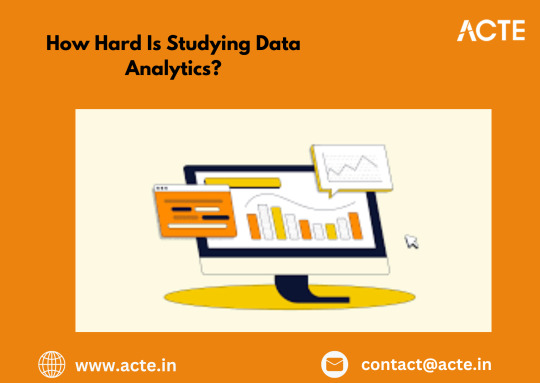
Foundational Knowledge
Grasping Basic Concepts
One of the initial challenges in data analytics is understanding fundamental concepts and terminology. Without prior knowledge in statistics, programming, or data management, the learning curve can be steep. However, many educational resources simplify these complex concepts for beginners.
Statistics: This is crucial for understanding data distributions, trends, and relationships. Key topics include hypothesis testing, regression analysis, and probability. While challenging, a solid foundation in statistics is vital for accurate data interpretation.
Programming: Proficiency in languages like Python or R is often necessary. These languages are used for data manipulation, analysis, and visualization. Learning to code can be daunting for newcomers, but online courses, tutorials, and coding bootcamps offer step-by-step guidance.
Data Management: Knowing how to collect, clean, and organize data is essential. This involves working with databases, learning SQL for querying data, and mastering data cleaning techniques. Though meticulous, these tasks are critical for ensuring analysis accuracy and reliability.
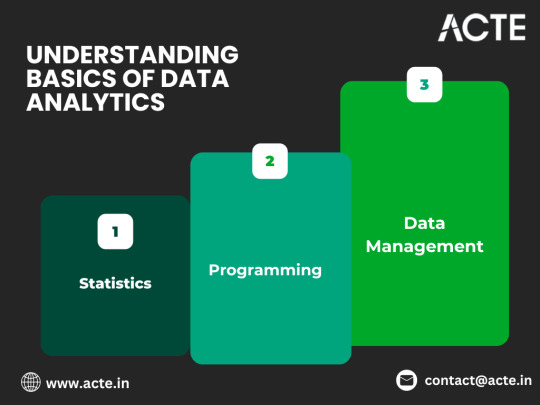
Diving into Advanced Topics
Exploring Complex Concepts
Once you have a handle on the basics, you'll need to explore more advanced topics in data analytics.
Machine Learning: This involves training algorithms to make predictions or decisions based on data. Understanding both the theoretical and practical aspects of models like supervised and unsupervised learning, neural networks, and natural language processing is essential but can be complex.
Data Visualization: Effectively communicating your findings is as important as the analysis itself. Tools like Tableau, Power BI, and Python libraries like Matplotlib and Seaborn help create compelling visualizations. Developing this skill requires time and practice.
The Learning Journey
Continuous Education
Studying data analytics is an ongoing process. The field constantly evolves with new techniques, tools, and technologies. Staying updated with industry trends and continuously learning is both a challenge and a thrill in a data analytics career.
Dedication and Practice: Mastering data analytics demands regular practice, hands-on projects, and real-world applications to solidify your understanding and skills. For those keen to excel in data analytics, enrolling in Data Analytics Online Course can be highly advantageous. Such a program provides a unique opportunity to acquire comprehensive knowledge and practical skills crucial for mastering data analytics.
Resources and Support: Quality learning resources greatly influence your learning experience. Platforms like Coursera, edX, and Udacity offer comprehensive courses for all levels. Communities such as Stack Overflow, Reddit, and professional networks provide support and collaboration opportunities.
Problem-Solving Mindset: Data analytics involves solving complex problems and handling uncertainty. Developing a problem-solving mindset, critical thinking skills, and the ability to work with incomplete data are essential for success.
Conclusion
Studying data analytics can be challenging, especially for beginners. It requires a blend of statistical knowledge, programming skills, and a strong analytical mindset. However, with the right resources, dedication, and continuous learning, these challenges are surmountable. The rewards of a data analytics career—high demand, competitive salaries, and the ability to make impactful decisions—make the effort worthwhile. If you have a passion for uncovering insights and solving problems, data analytics could be a fulfilling and exciting career path for you.
0 notes
Text
5 Tools Everyone in the Data Science Full Course Industry Should Be Using
The data science field thrives on the use of cutting-edge tools that make data analysis, modeling, and visualization seamless. Whether you're just starting a data science full course or working in the industry, knowing the right tools can supercharge your efficiency and impact. In this blog, we’ll highlight 5 essential tools every data science professional and learner should incorporate into their workflow.
1. Python
The Versatile Programming Powerhouse Python has become synonymous with data science because of its simplicity and extensive library ecosystem.
Key Features:
Libraries like Pandas for data manipulation, Matplotlib for visualization, and Scikit-learn for machine learning.
Wide adoption in both academia and industry.
Why It’s Essential: Python is beginner-friendly yet robust enough for advanced tasks, making it the backbone of most data science projects.
Example Use: Analyze a large dataset to uncover trends or train a predictive machine learning model.
2. R
The Statistician’s Best Friend R is a programming language designed for statistical analysis and visualization.
Key Features:
Advanced statistical modeling capabilities.
Libraries like ggplot2 for stunning data visualizations.
Why It’s Essential: R excels in statistical tasks, making it invaluable for data scientists focused on analytics.
Pro Tip: Use R for projects requiring detailed statistical testing or visualization.
3. SQL
The Database Querying Expert Data is often stored in relational databases, and SQL (Structured Query Language) is the universal tool for accessing it.
Key Features:
Efficient querying of massive datasets.
Integration with data visualization and analysis tools.
Why It’s Essential: Almost every data science job requires SQL proficiency to retrieve and prepare data.
Example Use: Write a query to extract sales data for a specific product category over the last year.
4. Jupyter Notebook
The Interactive Workspace for Coding and Sharing Jupyter Notebook allows you to combine live code, visualizations, and text explanations in one interface.
Key Features:
Interactive Python environment for coding.
Markdown support for creating rich documentation.
Why It’s Essential: Perfect for documenting workflows, creating tutorials, and presenting analysis.
Pro Tip: Use Jupyter to create sharable notebooks that showcase your work in a professional format.
5. Tableau
The Data Visualization Pro When it comes to presenting insights, Tableau is a game-changer.
Key Features:
Drag-and-drop functionality for creating dashboards.
Ability to connect to various data sources.
Why It’s Essential: Tableau makes it easy to turn raw data into visually compelling stories that stakeholders can understand.
Example Use: Build a dashboard showing real-time sales performance across multiple regions.
Conclusion
These five tools—Python, R, SQL, Jupyter Notebook, and Tableau—are the cornerstones of success in data science. By mastering them, you'll not only excel in your data science full course but also set a solid foundation for a successful career.
Want to see these tools in action? Check out our YouTube Live session to learn how to harness their full potential in your data science journey!
0 notes
Text
How to Start Your Career in Data Analytics
There are countless opportunities in the fascinating field of data analytics. Here is a simple tutorial to get you started if you want to get into this field. We'll go over the fundamentals, necessary abilities, getting real-world experience, and networking.

1. Understand the Principles
Gaining an understanding of data analytics will put you on the correct track. In order to make wise decisions, data analytics entails gathering, processing, and analyzing data. Start by familiarizing yourself with the following important concepts:
Data Collection: The process of compiling data from multiple sources.
The practice of correcting or deleting inaccurate data is known as data cleansing.
Data analysis methods involve analyzing data to find trends or patterns.
It's not necessary to dive in headfirst. Start with resources that are appropriate for beginners, such as online guides and introductory classes.
2. Develop core skills.
To be effective in data analytics, you need a specific skill set. Focus on these essential areas:
Technical Skills: Master tools like Microsoft Excel for data manipulation, SQL for database queries, and data visualization software such as Tableau or Power BI. These tools help you organize and visualize data effectively. Statistical Knowledge: Learn basic statistics, including mean, median, standard deviation, and probability. This knowledge helps you understand data trends and make predictions.
Programming Skills: Familiarize yourself with programming languages such as Python or R. Both are popular in data analytics for their ability to handle large datasets and perform complex calculations.
Several online platforms offer courses in these areas. For instance, Codecademy and DataCamp provide interactive lessons in Python and R tailored to data analytics.
3. Gain hands-on experience
Experience is crucial in data analytics. Start by working on small projects to apply your skills. Here’s how:
Personal Projects: Find publicly available datasets on sites like Kaggle or Google Dataset Search and try to analyze them. This can help you practice data cleaning, analysis, and visualization.
Internships: Look for internships or entry-level positions that offer real-world experience. These roles often provide valuable exposure to industry practices and tools.
Portfolio Development: Document your projects and results in a portfolio. Include examples of data analyses, visualizations, and any insights you’ve drawn. A strong portfolio can significantly enhance your job applications.
4. Build your professional network.
Networking is key to advancing your career. Connecting with professionals in the field can open doors and provide valuable insights. Here’s how to build your network:
Join Communities: Participate in online forums, LinkedIn groups, and local meetups related to data analytics. These platforms can offer advice, job leads, and support.
Attend Events: Go to industry conferences, webinars, and workshops. These events are great for learning about new trends and meeting potential employers or mentors.
Engage on Social Media: Follow industry leaders on platforms like Twitter and LinkedIn. Engaging with their content can keep you informed and connected to the latest developments in data analytics.
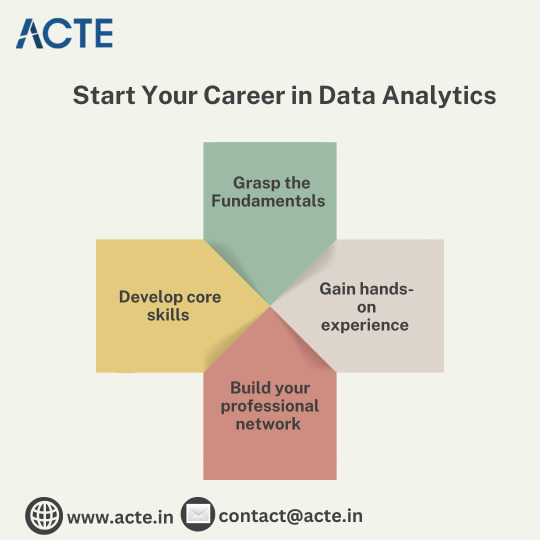
Gaining practical experience, developing a professional network, and grasping the fundamentals are all necessary for beginning a career in data analytics. You'll have no trouble landing a great job in this exciting sector if you put in the necessary effort and acquire the necessary tools. Take a deep breath, keep studying, and seize the fascinating prospects presented by data analytics! I appreciate you reading.
0 notes